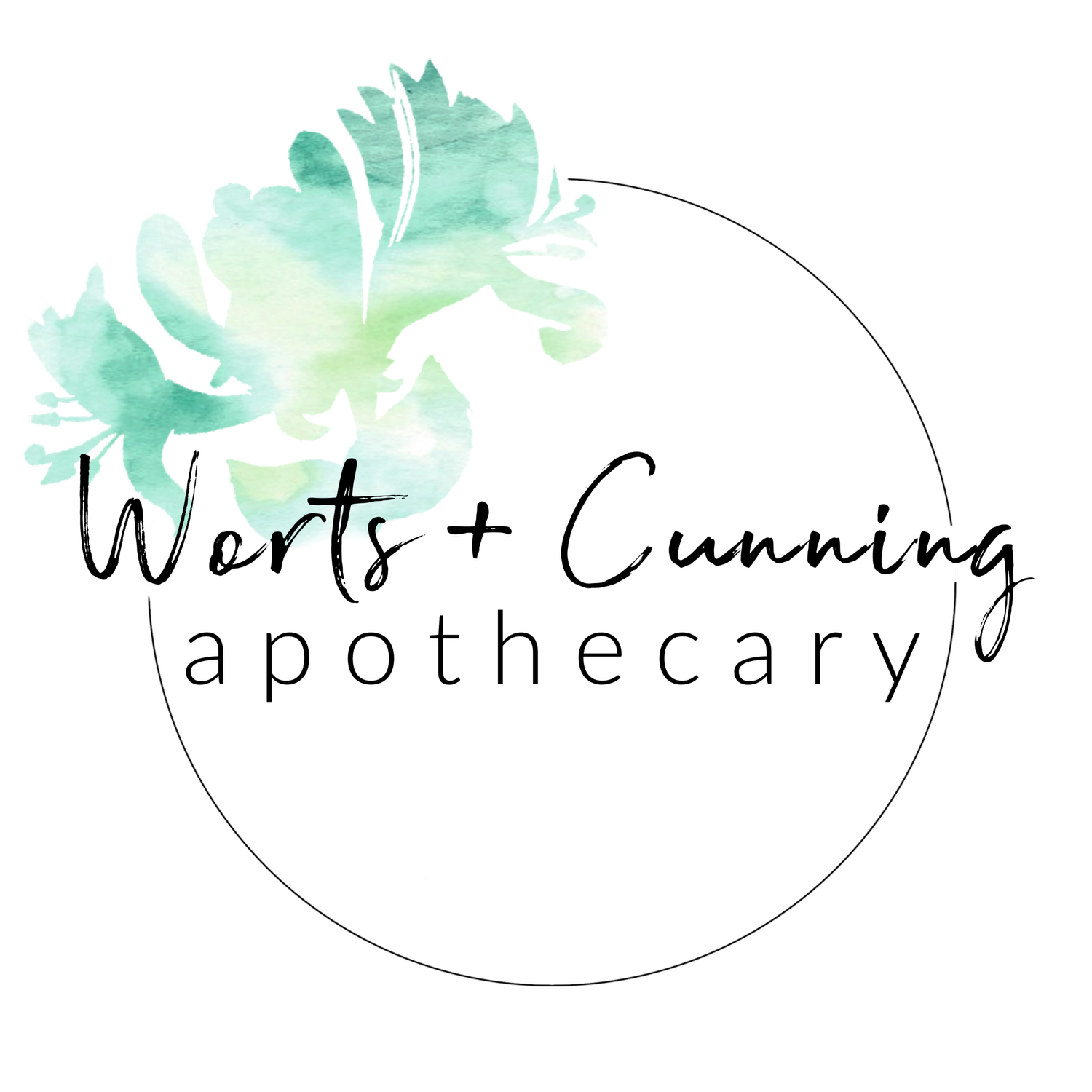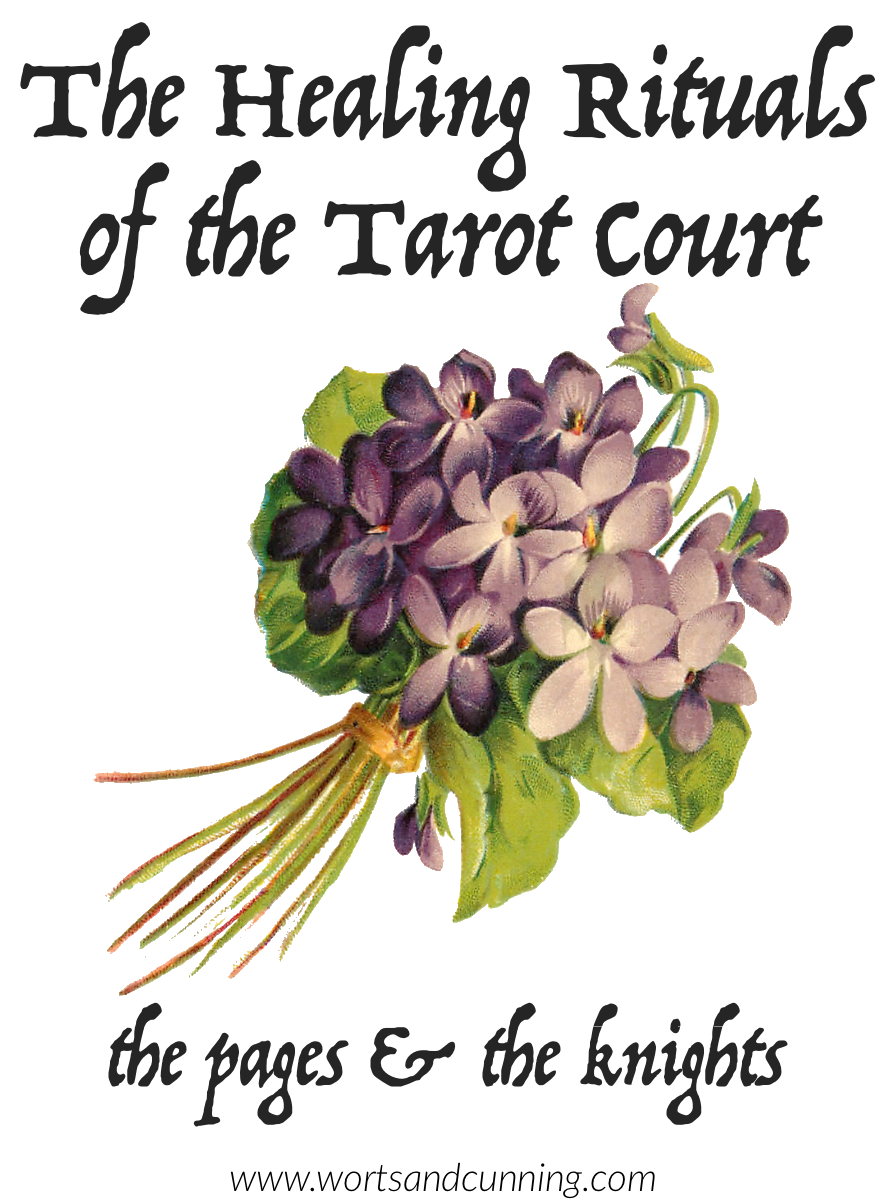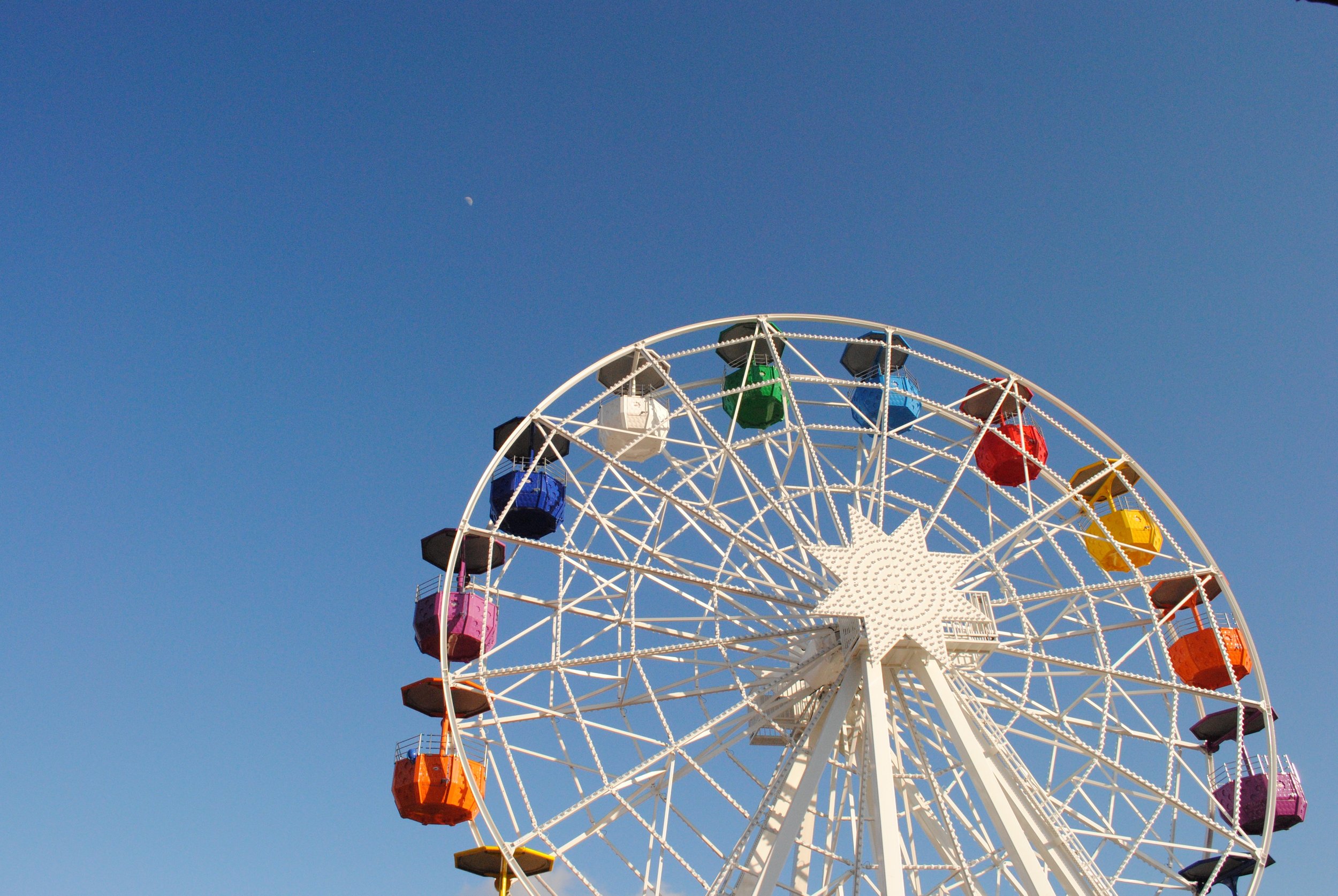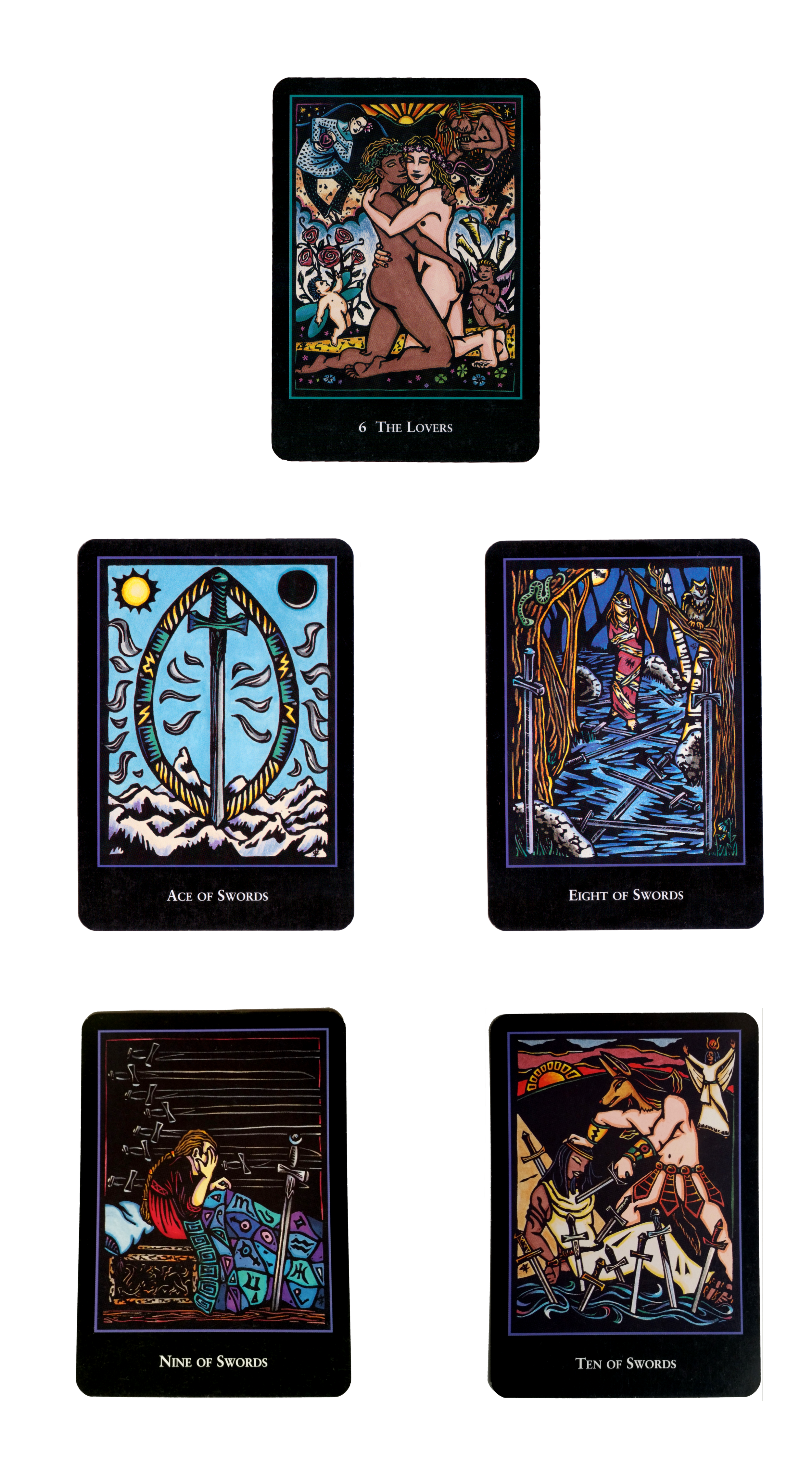Healing Rituals of the Tarot Court: Pages & Knights
The Tarot Court cards (also known as face or coat cards) play an interesting role in any tarot deck. Traditionally, the Court cards depict people (whether archetypal or relational) in your life, unlike the rest of the Minor Arcana (aka as the pip cards) which explore events, activities, and situations one might come across. In some ways they represent a subdued energy of the archetypal characters you might meet in the Major Arcana - but more on that in a bit.
Many tarot readers of all experience levels find Court cards challenging to interpret, not least of which because the traditional names of the cards - Page, Knight, Queen, and King - can feel unrelatable and limiting. The hierarchical naming of the cards can seem archaic, unnecessarily gendered, and difficult to interpret in a reading when you're trying to figure out why the Page of Swords is showing up for you and who the heck the King of Wands is supposed to be in your life. Also, these cards often have less "action" in them when compared to most of the other cards in the deck (of course, this varies from deck to deck) making them more challenging to interpret when compared to the rest of the Minor Arcana.
And yet, through their both too specific or too vague energy, I love the Court cards. I think this love comes from the way that I was first introduced to reading them - which was less about actual people showing up in your life and more about the arrival of archetypes and the opportunity for embodying energy that would benefit one's development. When the Court cards are approached from the perspective of archetype and embodiment, there is greater opportunity to interact with tarot as a tool of directed development of consciousness. For me the Court cards embody the tarot's ability to greatly reduce "haphazard movement and spiritual chaos" in one's spiritual journey, as tarot scholar Pamela Eakins writes.¹ In other words, the Court cards help us to connect with purpose, untangle spiritual knots in our energetic flow, and learn how to embody the consciousness needed to develop as individuals within the collective.
So how do we connect with the Court cards through archetype and embodiment? Let's start by meeting the Court cards and exploring their structure within tarot. Then I'll share with you a series of healing rituals for the four archetypes of the Court to help you embody the wisdom they represent beginning with the Pages and Knights in this post and following with the Queens and Kings in the next post.
The Structure of the Court
One of the oldest forms of representation of people in tarot decks, proto-tarot decks, and the playing card games that influenced tarot is that of royalty or at least upper class individuals. The reason for this is varied but includes the fact that early tarot cards were luxury items produced for royal Courts and wealthy individuals, so the Court cards reflected the lives of those they were being produced for.² The images in early tarot were based on images and archetypes that would have been familiar and recognizable to players from books, plays, pageants, and frescoes.³ That said, the images of the tarot cards may have followed a familiar format, but the details of the Court cards and other cards with people in them, changed with Courtly fashion, cultural differences, and artistic license. This practice of evolving the image of tarot cards continues on today, with the expansion of Court card culture and naming, but the basic structure of the Court cards that inform most modern decks are listed below. I've also included some simple and traditional interpretations of each card.
Page - Youth, curiosity, naivety
Knight - Young adulthood, exuberance, brashness
Queen - Middle age, confidence, vision
King - Old age, authority, legacy
The traditional structure of the Court cards roughly follows a path from youth and inexperience to age and experience. If you were to only work with the Court cards from this perspective, there's a lot of use and wisdom to be found. We start with the student, whether a child or young adult, in the form of the Page as they are just starting or in the midst of their studies about life. The Knights move into the combination of awkwardness, idealism, and sometimes hubris of teenage years and young adulthood, where there is more freedom of movement to explore the world and begin to formulate and test out one's ideas about what they find. The Queens represent adulthood moving into middle age and help to understand better our vision of a life and a world that we want to be in both understanding our limitations and potential better. Finally, the Kings represent middle to old age and are as much about looking back as they are looking forward, having tested out and determined what foundations are needed to leave behind a legacy while supporting generations to come. Take out the unnecessary gendering of these cards allowing each Court card to be any gender or agendered and you have a system of interpretation and engagement with the Court cards that can be of use to most any querent.
In modern decks there has been expansion around the names, presentations, and ideas around the Court cards in tarot decks, a practice that was primarily born from the (often lesbian and queer) feminist tradition of re-imaging and reclaiming tarot that began in the 1970s.⁴ I love the ways that the language around the Court cards has continued to expand and as I share some of the alternative names below, I encourage you to work with the ones that you resonate with the most, applying them to any deck you work with. Tarot is meant to help us find our story, and our choice of language for each of the cards is one of the ways that we can do that.
With that in mind let's explore the archetypes of the Court cards.
The Archetypes of the Court Cards
What are the archetypes of the Court cards that we are being invited to embody when they come up in a reading or when we use the cards in ritual? A great place to start to understand the archetypes of the Court cards is to explore the many ways each card has been named. As mentioned before, modern tarot culture has expanded on the traditional language of the Court cards, relying less on a hierarchical and royal Court structure, and more on trying to connect with the spiritual path and life stages of a querent (i.e. the person being read for) that is more broad and inclusive. I've gone ahead and included interpretations of the Court cards by six modern decks to help show you the many archetypal energies that the Court cards can represent. I've listed each alternative name in order of Page, Knight, Queen, and King (i.e. Child is the Page card in The Amazon Tarot and so on).
The Amazon Tarot ~ collaboratively made by Billie Potts, et al
Child
Amazon
Companion
Queen
The Collective Tarot ~ collaboratively made in Portland, OR
Seeker
Apprentice
Artist
Mentor
Future Ancestor Tarot by Alexa Villanueva
Student
Explorer
Listener
Maker
Tarot of the Crone by Ellen Lorenzi Prince
Beast
Witch
Grandmother
Shadow
The Shining Tribe Tarot by Rachel Pollack
Place
Knower
Gift
Speaker
The Slow Holler Tarot ~ collaboratively made predominantly by queer and/or BIPOC southern US Americans
Student
Traveler
Visionary
Architect
World Spirit Tarot by Lauren O'Leary and Jessica Godino
Seer
Seeker
Sybil
Sage
The Herbcrafter's Tarot by Joanna Powell Colbert and Latisha Guthrie
Hijas
Adelitas
Madres
Curanderas
I work with all of the decks I've listed above and all influence my practice to some degree. I would add the following names for each Court card:
Page: Student, Scholar, Philosopher
Knight: Messenger, Rebel (with or without a cause)
Queen: Oracle, Mediator, Organizer
King: Archivist, Teacher
In addition to renaming the individual cards in the Court, we can choose an alternative to the word and concept of Court itself, whether choosing traditional terms like Face or Coat Cards, or alternatives such as:
Circle
Family
Witches
Coven
Collective
Community
Having these alternative names for the Court cards means that when I pull a Queen card during a reading I can choose to work with the particular interpretation of Queen energy with the deck, but I also know that I have a library of Queen-type archetypes to work with. In some readings it makes more sense for me to connect with the Mediator energy of the Queen where in other readings, it is the energy of Queen as Visionary that I can connect with. As a reader and student of tarot I encourage you to focus on the archetypes of the Court cards that make the most sense for you at this time and expand on those concepts as you feel called and ready. There are no "correct" archetypes for any of the Court cards and knowing which archetypal energy is calling to you is part of the intuitive process of reading tarot from a healing perspective.
I also want to mention that I've focused on the empowering aspects of the Court cards and less on the challenging energies of these cards - there's a whole other shadow work aspect to the Court cards that is beyond the scope of this post. Shadow work and the Court cards is a post for another day, but is another useful aspect of healing work with the Court cards. If you're looking for more general recommendations about shadow work and the tarot, come this way.
Another way to help understand the Court cards is to compare them to each other and specifically the Pages and the Knights to one another and the Queens and the Kings to one another.
Yearning & Seeking: The Pages & The Knights
For me, the Pages and the Knights are closer to each other energetically than they are to the Queens and Kings and I think that this helps to interpret the meanings of these cards. You'll find that the Knights and the Pages share a name "Seeker" in some decks and I think this is a helpful way to understand the similarities and differences between these two cards. The Pages are seeking knowledge, but are also seeking to be embraced within a (often learning-based) community. The Knights are seekers, too, but are often seeking to break out of the confines of the community spaces they've grown up in (family cultures, school systems, work spaces) and are more interested in the outward expression of what they've learned as opposed to the desire for an inward drawing of knowledge as expressed by the Pages.
Another way to understand the Pages and the Knights is to think of the Pages as trying to find their place by being in a place (they are trying to learn new things but familiarity is still comforting and being part of a community is a focus), while the Knights are trying to find their place by exploring what they perceive to be "other" spaces.
The Rituals
These rituals were written with the solitary practitioner in mind but can be easily adapted to group needs. Add to, adjust, and leave out whatever you need from the rituals as you are called. I try to create rituals that are simple enough for most folks to show up to but can also act as a foundation for folks to build upon. I hope you always feel inspired to make them your own.
The Pages: A Ritual of Stability
Student · Child · Seeker · Beast · Seer · Philosopher · Place
Primary Element: Earth
Plant Ally: Milky Oat (Avena sativa)
Working with the Pages is an opportunity to embody stability in your life. It is hard to move forward with an idea, take on a new project, connect with others, or understand our wholeness without a supportive foundation from which to work from. Imagine the life of a young child and student - the emphasis on learning is less about independent study and more about providing foundational knowledge and supporting the curiosities of a young mind. In ideal child-centered and compassionate learning environments, certain boundaries and systems are put in place to protect and nourish the world of young learners. Swimming lessons, for example, shouldn't start with throwing a child into the deep end, but by introducing children to water safety, the feel of water, the difference between shallow and deep, and lots of play with experienced swimmers around. The Pages help us to imagine and embody these feelings of stability and safety so that we can proceed with the work and play of learning and exploration.
For your ritual, you'll need all four Page cards from your tarot deck of choice. Alternatively, you can spend time drawing, collaging, or otherwise creating your own personal Page cards to use in ritual. We will be placing each of these cards in one of the four cardinal directions and if you like you can built an altar for each card in each direction that helps to call in the energy of each Page and/or simply light a candle next to each card. Again, do what you feel called, able, and inspired to do - this is your ritual to support your unique embodiment needs.
Begin by creating sacred space and perhaps a breathwork practice (such as the Tree of Life technique) to help you settle into your body. Set the Page of Swords in the East, the Page of Wands in the South (if you're in the northern hemisphere) or North (if you're in the southern hemisphere), the Page of Cups in the West, and the Page of Pentacles in the North (if you're in the northern hemisphere) or in the South (if you're in the southern hemisphere). Of course, these are the directional correspondences of the tradition I work in, so adjust them to fit the tradition you work with if needed.
Next, spend a few moments setting your intention:
I embody stability in order to…
Examples of calling in stability might be:
I embody stability in order to show up more deeply to my intuition.
I embody stability in order to be more present in my relationships.
I embody stability in order to support my creative flow.
Once your intention is set, speak it aloud or express it nine times, paying attention to the sensations that arise in your body as you recite your intention like a charm. You're not trying to analyze these feelings or connect them to anything in particular, just let them arise and flow through you as you practice awareness of them.
Turn to the East where the Page of Swords is located. Speak to them and call forth the power of the Page of Swords:
Blessings to the Page of Swords
Beyond and within me
Help me embody stability
That I may carry the sword of clarity
Spend some time visualizing and feeling the sword of the Page in your hands. Take time to move and breathe until you and the sword feel balanced together. When you are ready imagine the sword flowing into your energy, able to be summoned whenever you need it.
Turn to the South where the Page of Wands is located. Speak to them and call forth the power of the Page of Wands:
Blessings to the Page of Wands
Beyond and within me
Help me embody stability
That I may carry the wand of creativity
As with the sword, spend some time visualizing and feeling the wand of the Page in your hands. Take time to move and breathe until you and the wand feel balanced together. When you are ready imagine the wand flowing into your energy, able to be summoned whenever you need it.
Turn to the West where the Page of Cups is located. Speak to them and call forth the power of the Page of Cups:
Blessings to the Page of Cups
Beyond and within me
Help me embody stability
That I may carry the cup of sensitivity
As with the sword, spend some time visualizing and feeling the cup of the Page in your hands. Take time to move and breathe until you and the cup feel balanced together. When you are ready imagine the cup flowing into your energy, able to be summoned whenever you need it.
Turn to the West where the Page of Pentacles is located. Speak to them and call forth the power of the Page of Pentacles:
Blessings to the Page of Pentacles
Beyond and within me
Help me embody stability
That I may carry the star of tranquility
As with the sword, spend some time visualizing and feeling the pentacle or star of the Page in your hands. Take time to move and breathe until you and the pentacle feel balanced together. When you are ready imagine the pentacle flowing into your energy, able to be summoned whenever you need it.
Finally, pick up each card and place them in a stack over your heart, while saying:
Protected by the sword
Warmed by the flame
Held by the waters
Nourished by the land
Take a few moments to feel these words and energies within you. When you are ready, seal the ritual by saying:
All this and more I embody
All this and more I call to me
By love and will, so mote it be
After the ritual you can either return your Page cards to the deck or set them up on an altar or some place where you will see them regularly. In the days and weeks ahead pay attention to when similar sensations arise for you as you experienced within this ritual and know that you can call upon any or all of the tools of the Pages when you need extra grounding and stability.
The Knights: A Ritual of Discernment
Messenger · Amazon · Apprentice · Witch · Traveler · Seeker · Rebel · Knower · Explorer
Primary Element: Air
Plant Ally: Peppermint (Mentha piperita)
Working with the Knights is an opportunity to embody discernment in your life. The Knights are the messengers and seekers of the tarot Court, ready to spring beyond the classroom of the Pages and into the unknown. When the Knights show up for us in readings again and again, they are often indicating that there is an important message being delivered to us or information that we need to seek out. The key to successfully connecting with that message is the power of discernment. There is so much to see and do and experience in the world that it can be all too easy to get caught up in the movement and consumption of information, without learning how to discern and distill knowledge into wisdom. The Knights help us to trust our own inner knowing and find the resources to better develop our abilities for embodying discernment.
For your ritual, you'll need all four Knight cards from your tarot deck of choice. Alternatively, you can spend time drawing, collaging, or otherwise creating your own personal Knight cards to use in ritual. You'll also need four coins - any type of coin is just fine and that can be all the same, all different or a mix. Coins have been used in folk magick for generations as symbols of luck and protection and they'll act as conduits for both of those energies as well as tokens to "pay the messengers" within the ritual.
Begin by creating sacred space and perhaps a breathwork practice (such as the Tree of Life technique) to help you settle into your body. Place all four Knight cards before you (on your altar or otherwise) and hold the coins in your hand.
Wherever I travel
Wherever I go
No fear removes
My ability to know
Wherever I travel
Wherever I go
No pressure blocks
My ability to know
Wherever I travel
Wherever I go
No river drowns
My ability to know
Wherever I travel
Wherever I go
No words confuse
My ability to know
You can keep these coins on your altar, your wallet, or in a charm bag that you carry on your person. I like to keep mine in a jar that I shake when I need to dispel unwanted energy and call in some good fortune.
᠅
You’ll notice that I listed some correspondences for the Pages and Knights, including the elements. If you’re interested in learning more about the elements from a traditional western herbalism perspective, come this way. If you’re looking for tarot spreads, I have a few.
I hope that these thoughts and rituals about the tarot Court inspire your own practice and I’ll be back next month with the Queens and Kings.
In the meantime, may your travels through the tarot arcanas be full of illumination and inspiration so that your life may be filled with more clarity and peace.
This post was made possible through patron support.
❤︎ Thanks, friends. ❤︎
Decks Shown
A Deck of Cards by PW (c. 1500)
Tazama African Tarot
Amazon Tarot (1979)
The Weiser Tarot
The Herbcrafter’s Tarot
Tarot of the Spirit
📚
Footnotes
1. Pamela Eakins, Ph.D., Tarot of the Spirit (Boston: Red Wheel/Weiser, 1992), 4. The full quote reads: “As such, when the divine tool of tarot is correctly employed, the potential for haphazard movement and spiritual chaos is reduced.”
2. Tim Husband, 'Before Fortune-Telling: The History and Structure of Tarot Cards,' The Met, April 8, 2016, https://www.metmuseum.org/blogs/in-season/2016/tarot (accessed June 2022).
3. Sherryl E. Smith, 'Italian Tarot in the 15th Century,' Tarot Heritage, July 24 2014, https://tarot-heritage.com/history-4/italian-tarot-in-the-15th-century/ (accessed June 2022).
4. Decks like The Amazon Tarot, published in 1979, followed by a number of decks in the 1980s including the New Amazon Tarot, Daughters of the Moon and The Book of Aradia Tarot (the latter two inspired in some part by Shekinah Mountainwater's Matriarchal Tarot), Thea's Tarot (inspired by A New Women's Tarot by Billie Potts who was one of the primary editors of the Amazon Tarot and New Amazon Tarot), and The Motherpeace Tarot. Some of these decks were collectively made, others by individuals or in partnerships, but all were part of the growing intersections of lesbian organizing, Goddess spirituality, and feminist rebellion.







































